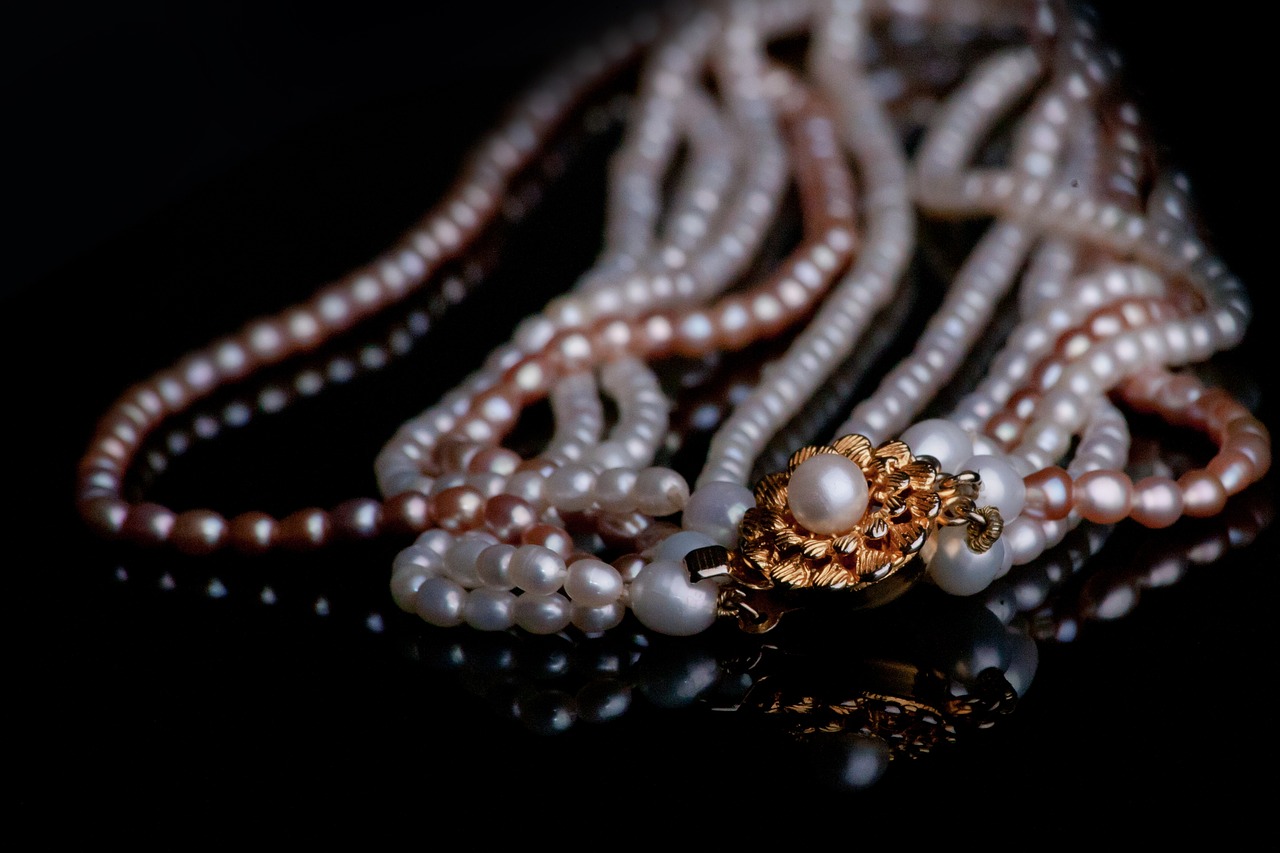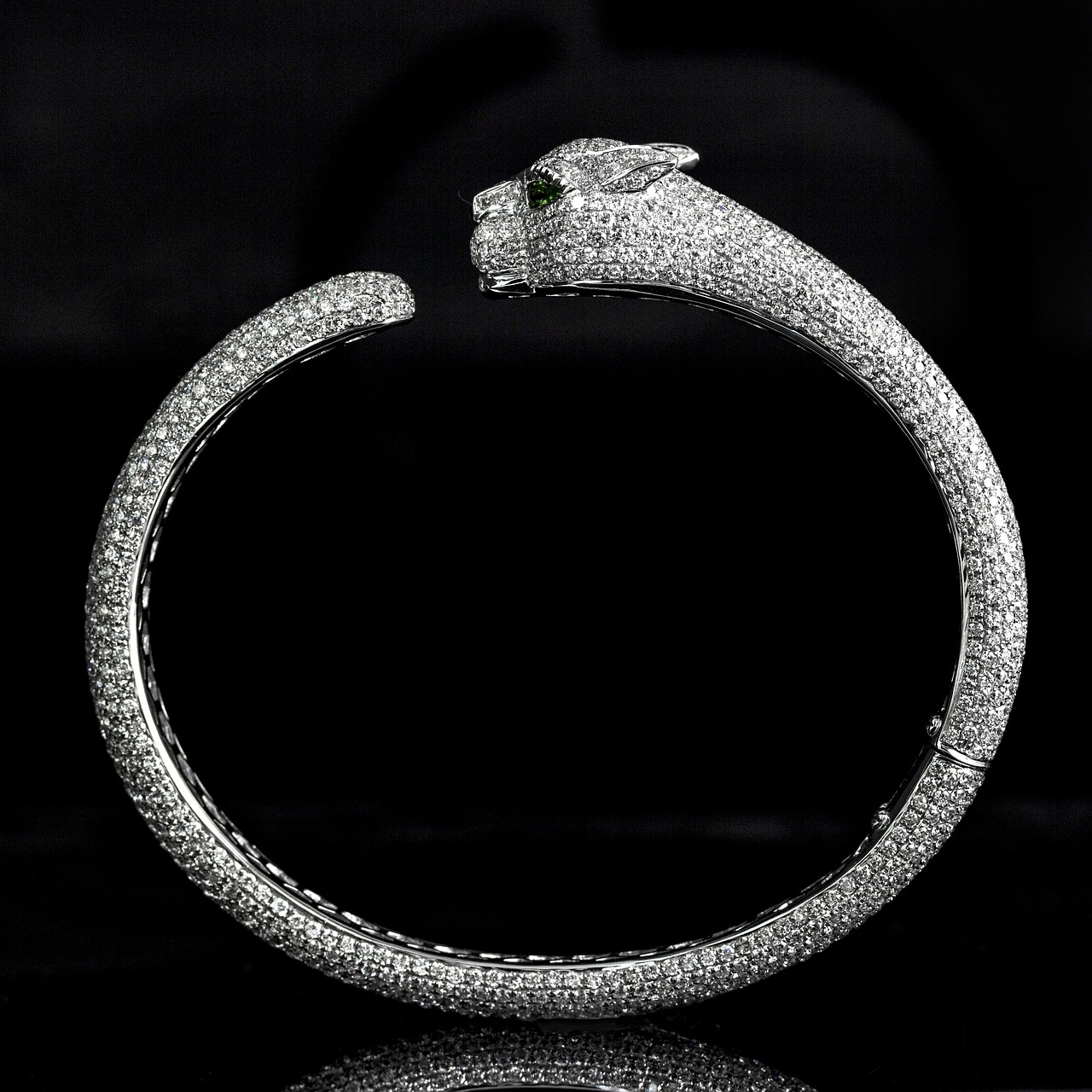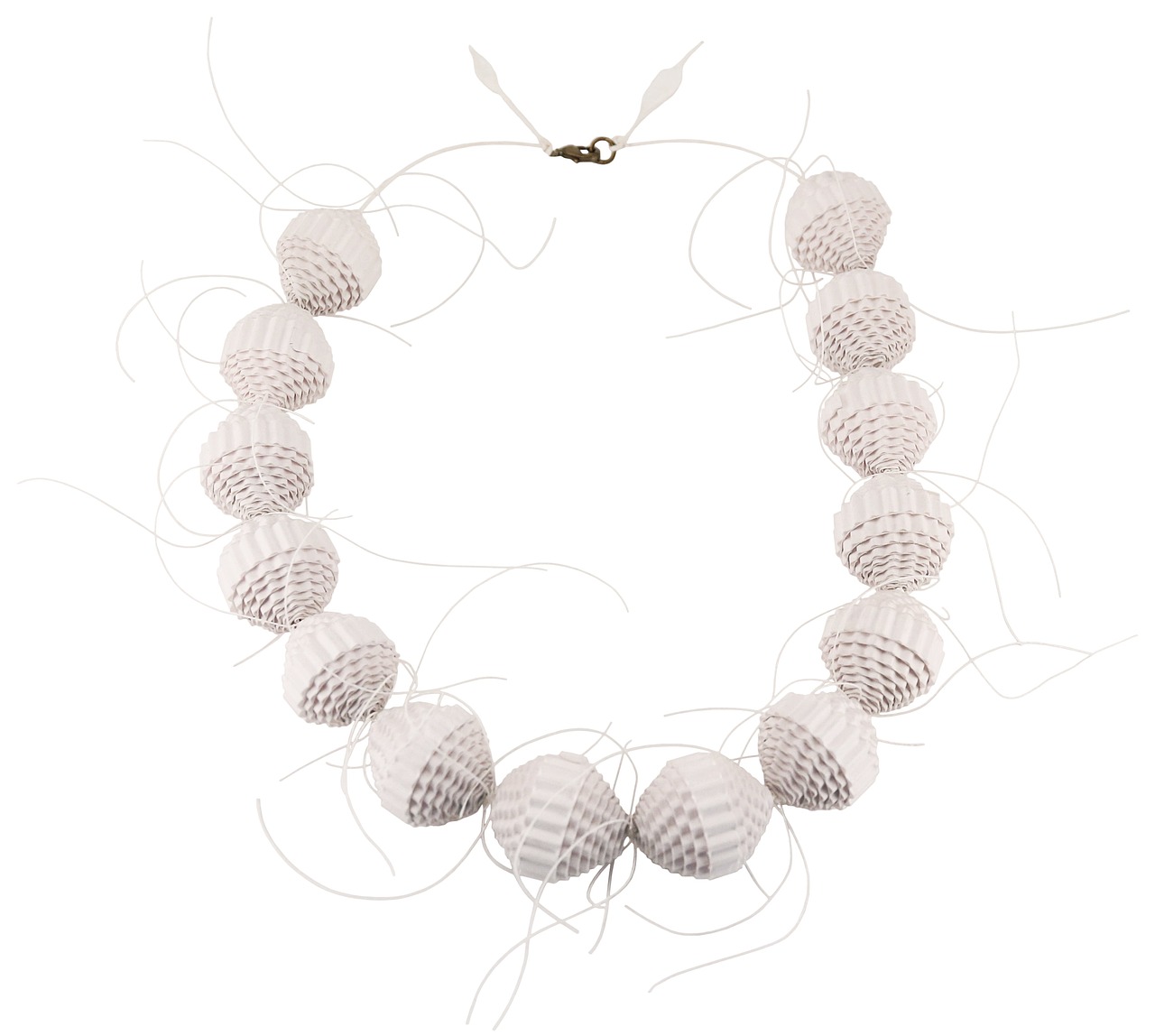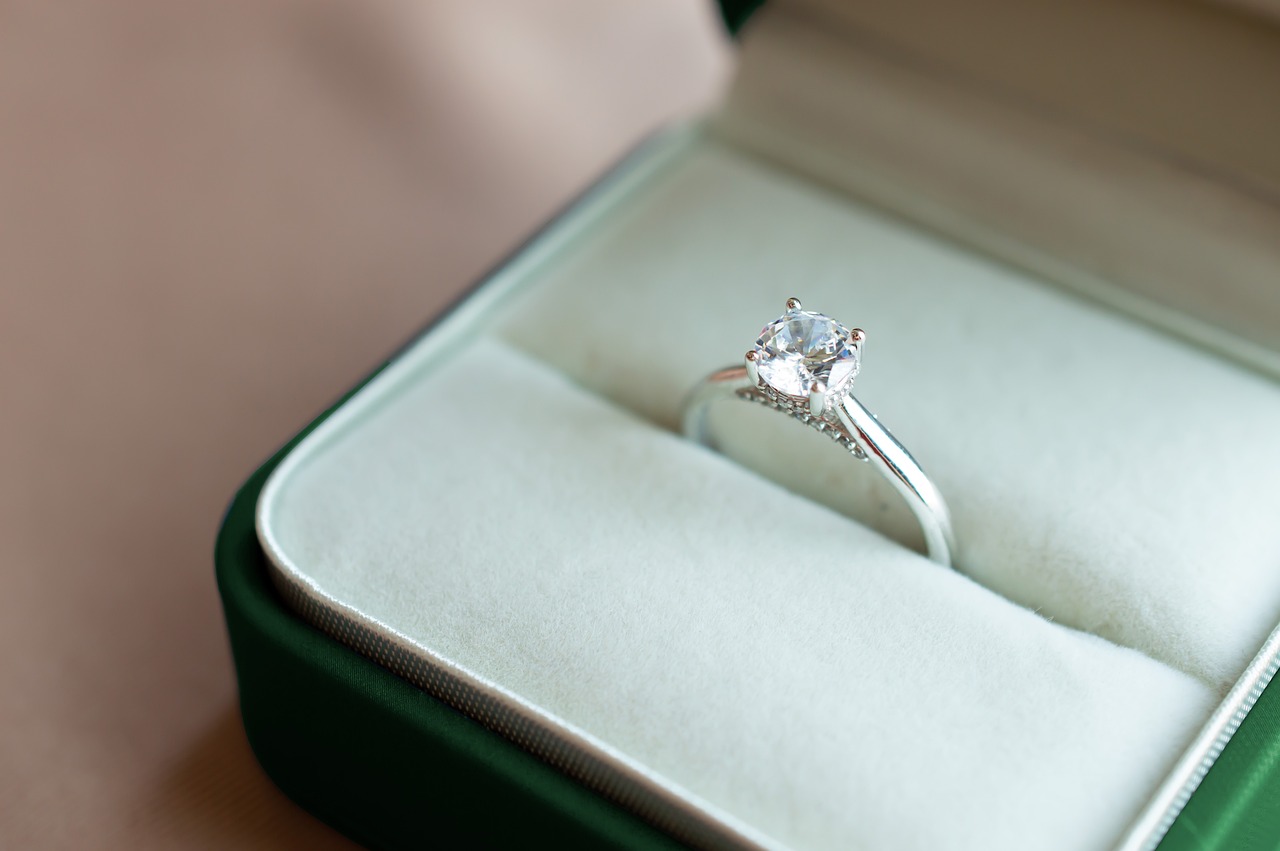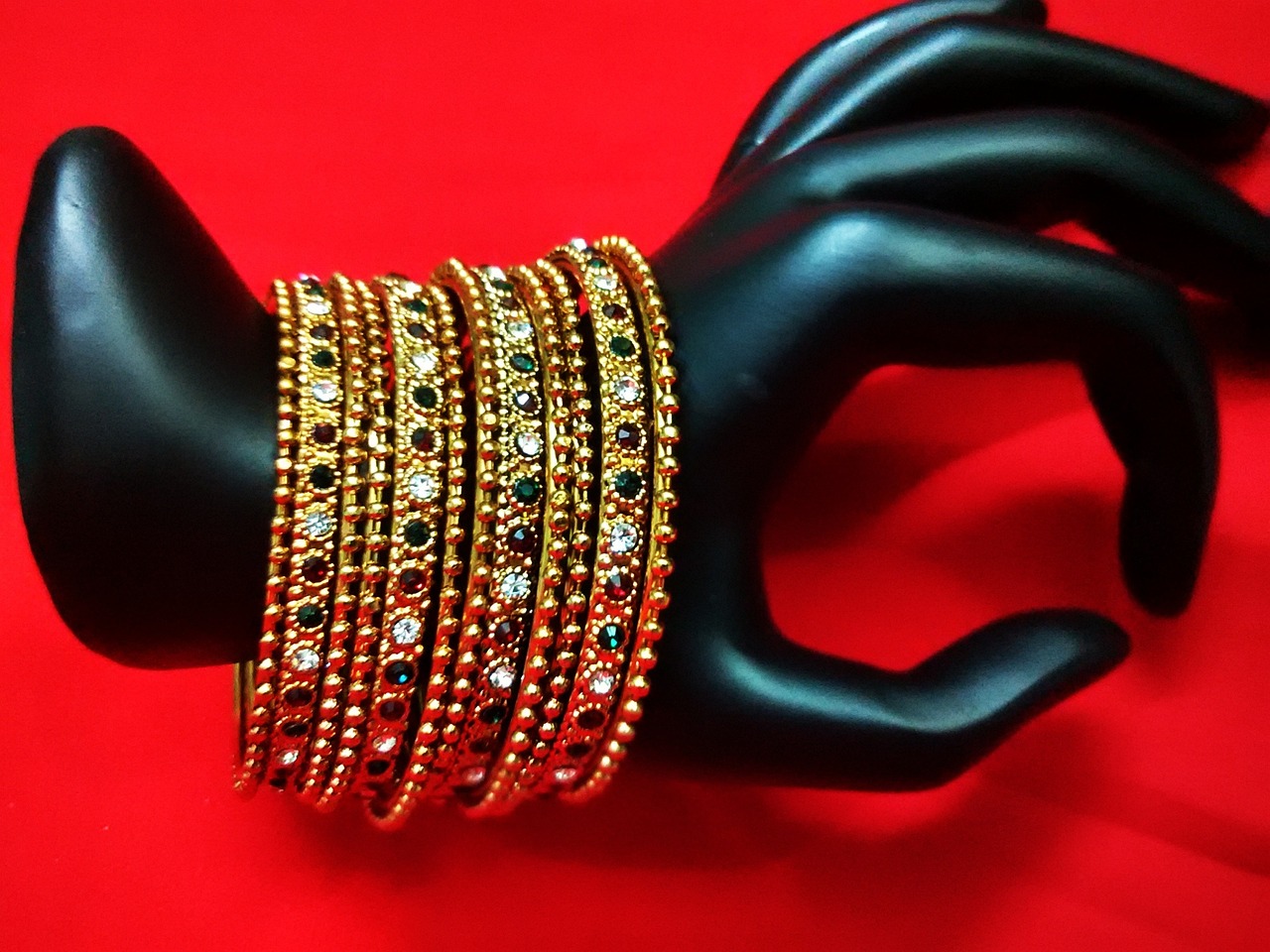Emeralds have enchanted humanity for centuries, representing wealth, wisdom, and love. These stunning green gemstones, celebrated for their beauty and rarity, hold a significant place in history, culture, and modern society. This article delves into the fascinating world of emeralds, examining their historical significance, metaphysical properties, and practical uses today.
Emeralds are precious gemstones that belong to the beryl family. Their vibrant green color, primarily caused by the presence of chromium and vanadium, makes them one of the most coveted gemstones in the world. Formed deep within the Earth, emeralds undergo a complex geological process that contributes to their unique characteristics, making them not only beautiful but also valuable.
Historically, emeralds have been closely associated with wealth and prosperity. Many royal families have adorned themselves with these exquisite stones, often using them as symbols of power and status. From the famous Emerald Tablet of Hermes to the stunning jewels in the crowns of monarchs, emeralds have played a pivotal role in the luxury market. Today, they continue to be a symbol of opulence and are highly sought after in high-end jewelry.
Emeralds are often regarded as stones that enhance wisdom and intuition. Ancient cultures believed that wearing emeralds could promote mental clarity and sound decision-making. They were used in various rituals and were thought to facilitate communication with the divine. This section explores how emeralds have been revered as symbols of knowledge throughout history.
Many believe that emeralds possess various healing properties. They are said to promote emotional balance, stimulate physical healing, and support spiritual growth. While scientific evidence may be limited, anecdotal accounts and traditional beliefs continue to highlight the potential benefits of these gemstones in enhancing overall well-being.
Selecting an emerald can be a daunting task due to their unique qualities. When purchasing an emerald, consider factors such as:
- Color: The most desirable emeralds exhibit a deep, vivid green hue.
- Clarity: Look for stones with minimal inclusions, though some inclusions are common.
- Cut: The cut affects the stone’s brilliance; popular cuts include oval, pear, and cushion.
- Carat Weight: Larger emeralds can be significantly more valuable.
Emeralds come in various types, including natural, synthetic, and treated emeralds. Understanding these distinctions is crucial for buyers, as they can significantly affect value and marketability. Natural emeralds, formed in nature, are typically more valuable than synthetic or treated versions.
Emeralds are a popular choice for jewelry, often featured in rings, necklaces, and earrings. Current trends highlight their versatility in design, allowing them to be styled for both casual and formal occasions. This section explores how to incorporate emeralds into your wardrobe effectively.
Across various cultures, emeralds hold significant meanings. In Indian astrology, they are believed to bring good fortune and are associated with the planet Mercury. In ancient Egypt, emeralds symbolized fertility and rebirth, often buried with the deceased. This section highlights the diverse cultural interpretations of emeralds around the globe.
Proper care is essential for maintaining the beauty of emeralds. To ensure longevity, consider the following tips:
- Cleaning: Use warm, soapy water and a soft brush to clean your emeralds gently.
- Storing: Store emerald jewelry separately to avoid scratches.
- Protecting: Avoid exposing emeralds to harsh chemicals or extreme temperatures.
The emerald market continues to thrive, with increasing interest from investors. Analyzing market trends reveals potential for appreciation, especially as natural emeralds become scarcer. Additionally, the rise of synthetic emeralds poses questions about future valuations. This section offers insights for potential investors looking to enter the emerald market.

What Are Emeralds? Unveiling Their Origin and Composition
Emeralds are not just aesthetically pleasing gemstones; they are rich in history, culture, and significance. These precious stones belong to the beryl family, characterized by their stunning green hue. The captivating color of emeralds is primarily attributed to the presence of trace elements such as chromium and vanadium, which create their vibrant and sought-after appearance. Understanding the formation and composition of emeralds is essential in appreciating their value and allure.
Emeralds are formed deep within the Earth’s crust under specific geological conditions. They typically originate in metamorphic rocks, where the right temperature and pressure allow for the crystallization of beryl. This process can take millions of years, resulting in the formation of these exquisite gemstones. The ideal conditions for emerald formation include the presence of beryllium, aluminum, and silica, along with the aforementioned trace elements that give emeralds their distinctive color.
In terms of composition, emeralds are primarily composed of beryllium aluminum silicate. The unique combination of elements results in a hardness of 7.5 to 8 on the Mohs scale, making them relatively durable, yet they require careful handling due to their inherent inclusions, often referred to as jardin (French for garden), which can affect their clarity and brilliance.
Historically, emeralds have been revered as symbols of wealth and prosperity. Ancient civilizations, including the Egyptians, believed that emeralds were a representation of fertility and rebirth. Cleopatra, the last active ruler of the Ptolemaic Kingdom of Egypt, was famously known for her love of emeralds, which she used to adorn herself and her treasures.
In modern times, emeralds continue to hold a prominent place in luxury markets. Their rarity and the intricate process involved in mining and cutting these gemstones contribute to their high market value. Notable emeralds, such as the Imperial Emerald, have fetched millions at auctions, further solidifying their status as a symbol of affluence.
Emeralds are often associated with wisdom and intuition. In various ancient cultures, they were believed to enhance mental clarity and decision-making abilities. For instance, the ancient Greeks regarded emeralds as a tool for divination and foresight, using them to make critical decisions in both personal and political matters.
Moreover, many believe that wearing emeralds can promote a sense of calm and balance, aiding individuals in their quest for knowledge and understanding. This metaphysical aspect has made emeralds a popular choice among those seeking to improve their mental faculties.
Emeralds are often credited with numerous healing properties, both emotional and physical. Many practitioners of alternative medicine suggest that emeralds can help alleviate stress, promote emotional healing, and enhance overall well-being. Some believe that these gemstones can assist in overcoming negative emotions and foster a sense of peace and harmony.
Additionally, emeralds are thought to aid in physical healing, particularly in matters related to the heart and lungs. While scientific evidence supporting these claims is limited, the enduring belief in the healing properties of emeralds continues to attract enthusiasts.
Selecting the right emerald can be a daunting task due to the myriad of factors that influence their quality and value. Here are some essential aspects to consider when purchasing an emerald:
- Color: The most prized emeralds exhibit a deep, vivid green hue with a hint of blue.
- Clarity: Look for stones with minimal inclusions, as these can affect the stone’s brilliance.
- Cut: The cut of the emerald influences its overall appearance and sparkle. Popular cuts include oval, round, and emerald cuts.
- Carat Weight: Larger emeralds are rarer and more valuable, but smaller stones can also be exquisite.
By considering these factors, buyers can make informed decisions and select emeralds that not only suit their style but also hold lasting value.

Why Are Emeralds Considered Symbols of Wealth?
Emeralds have long been revered as symbols of wealth and prosperity, captivating the hearts of many throughout history. These exquisite gemstones, with their vibrant green hue, have adorned the crowns and jewels of royalty, making them a representation of affluence and power. The allure of emeralds extends beyond their beauty; they are steeped in rich history and cultural significance.
Historically, emeralds were prized by ancient civilizations, including the Egyptians, who believed these stones possessed divine qualities. Cleopatra, the famed queen, was known to have a particular fondness for emeralds, often wearing them to signify her royal status. The Inca Empire also held emeralds in high esteem, using them not only as adornments but as offerings to their gods, further solidifying their association with wealth.
In modern times, emeralds continue to be a staple in the luxury market. They are frequently featured in high-end jewelry collections, with renowned designers incorporating them into exclusive pieces. The demand for emeralds has surged, particularly in the luxury fashion sector, where they are often seen as a symbol of sophistication and elegance. Celebrities and affluent individuals alike have embraced emeralds, showcasing them at prestigious events and on red carpets, reinforcing their status as a luxury item.
One of the most famous emeralds in history is the Imperial Green Emerald, which weighed an impressive 632 carats and was owned by the Chinese Qing Dynasty. This remarkable gemstone exemplifies the historical connection between emeralds and wealth, as it was not only a stunning piece but also a symbol of imperial power. Another notable example is the Hooker Emerald, a 75.47-carat emerald that has been part of several royal collections and is often displayed in museums, further highlighting its historical significance.
The modern luxury market has adapted to the increasing interest in emeralds, with many jewelers offering ethically sourced stones that appeal to environmentally conscious consumers. This shift has not only enhanced the reputation of emeralds but has also contributed to their perceived value as a sustainable luxury item.
Emeralds are not just limited to jewelry; they have also found their way into the world of investment. As the market for precious gemstones grows, emeralds have emerged as a viable investment option, often appreciating in value over time. Collectors and investors are increasingly recognizing the potential of emeralds, which adds another layer to their association with wealth.
In conclusion, emeralds have cemented their place as symbols of wealth and prosperity through their rich history, cultural significance, and continued relevance in modern luxury markets. Their allure is not merely based on their physical beauty but also on the stories and legacies they carry. As we look to the future, the emerald will undoubtedly remain a timeless emblem of affluence and elegance.

How Do Emeralds Represent Wisdom and Knowledge?
Emeralds have long been revered not only for their stunning beauty but also for their symbolic significance. In various cultures throughout history, emeralds have been associated with wisdom and knowledge. This belief stems from their historical use as a source of insight and mental clarity.
In ancient civilizations, such as the Greeks and the Romans, emeralds were believed to possess the power to enhance one’s intuition and decision-making abilities. The famous philosopher Pliny the Elder noted that emeralds could help in the pursuit of knowledge, allowing wearers to gain deeper understanding and insight into their surroundings. This connection between emeralds and wisdom has persisted through the ages.
Moreover, in Indian culture, emeralds hold a special place as they are associated with the planet Mercury, which governs intellect and communication. Wearing an emerald is thought to strengthen one’s mental faculties, enhancing clarity of thought and promoting wise decision-making. This belief is supported by the Vedic texts, which emphasize the gemstone’s role in boosting cognitive abilities.
Emeralds are also linked to the heart chakra, which is believed to be the center of love, compassion, and emotional balance. When the heart chakra is open, individuals are thought to experience greater emotional clarity, allowing them to make decisions that are not only wise but also aligned with their true selves. This connection between emotional balance and wisdom highlights the multifaceted nature of emeralds.
In addition to their historical significance, modern metaphysical practices continue to embrace emeralds for their purported benefits. Many individuals use emeralds during meditation or mindfulness practices to enhance their intuitive abilities. The calming green hue of the stone is said to promote tranquility, allowing for deeper reflection and insight.
Furthermore, emeralds are often included in crystal healing practices, where they are believed to facilitate mental clarity and emotional healing. Practitioners claim that the vibration of emeralds can help clear mental fog, enabling individuals to make informed and wise choices in their lives. This modern interpretation of emeralds as tools for enhancing wisdom and intuition demonstrates their enduring appeal.
To sum up, the belief that emeralds enhance wisdom and intuition is deeply rooted in history and continues to be relevant today. Their association with ancient cultures, coupled with their modern metaphysical applications, underscores their significance as symbols of knowledge. Whether worn as jewelry or used in spiritual practices, emeralds remain a powerful emblem of clarity, insight, and wisdom.

What Are the Healing Properties of Emeralds?
Emeralds are not only prized for their striking beauty but also revered for their alleged healing properties. Across various cultures and traditions, these magnificent green gemstones are believed to possess the power to enhance emotional well-being, promote physical healing, and foster spiritual growth. This section delves into the claims surrounding the healing properties of emeralds, supported by anecdotal evidence and longstanding beliefs.
Many enthusiasts claim that emeralds can help in achieving emotional balance. This is attributed to their calming energy, which is said to alleviate feelings of stress and anxiety. The vibrant green hue of emeralds is often associated with nature and renewal, helping individuals connect with their inner peace. Those who wear emeralds or keep them close during challenging times often report a sense of tranquility and clarity, enabling them to navigate emotional turmoil more effectively.
Emeralds are also believed to have physical healing properties. Some proponents suggest that these gemstones can assist in alleviating various ailments, particularly those related to the heart, lungs, and digestive system. While scientific evidence supporting these claims is limited, many practitioners of alternative medicine advocate for the use of emeralds in healing rituals. They recommend placing emeralds on specific areas of the body to harness their energy, which is thought to stimulate healing processes and promote overall well-being.
In addition to emotional and physical benefits, emeralds are often associated with spiritual growth. Many believe that these gemstones can enhance intuition and psychic abilities, allowing individuals to connect more deeply with their spiritual selves. Emeralds are said to open the heart chakra, facilitating love, compassion, and understanding. This connection to the heart is crucial in spiritual practices, as it encourages individuals to express their true selves and foster deeper relationships with others.
Throughout history, various cultures have ascribed unique meanings and healing properties to emeralds. In ancient Egypt, emeralds were considered sacred and believed to symbolize fertility and rebirth. They were often buried with the deceased to ensure a safe passage into the afterlife. Similarly, in Indian astrology, emeralds are associated with the planet Mercury and are believed to bring wisdom and prosperity to those who wear them.
While the claims surrounding the healing properties of emeralds are largely anecdotal, some studies have explored the effects of gemstones on human psychology. Research indicates that wearing certain gemstones can influence mood and emotional states, although the mechanisms behind these effects remain unclear. As such, while the scientific community remains skeptical about the physical healing properties of emeralds, the psychological benefits cannot be ignored.
If you are interested in exploring the healing properties of emeralds, consider incorporating them into your daily practices. Here are a few suggestions:
- Wear Emerald Jewelry: Adorn yourself with emerald rings, necklaces, or bracelets to keep their energy close.
- Meditation: Hold an emerald during meditation to enhance your focus and connection to your heart chakra.
- Place in Living Spaces: Position emeralds in your home or workspace to promote a calming atmosphere.
In summary, while the healing properties of emeralds are steeped in tradition and anecdotal evidence, they continue to inspire and captivate those seeking emotional, physical, and spiritual enhancement. Whether you believe in their powers or simply appreciate their beauty, emeralds hold a special place in the hearts of many.

How to Choose the Perfect Emerald: A Buyer’s Guide
Choosing the perfect emerald can be a challenging experience, especially for those unfamiliar with gemstones. These stunning green stones are not only beautiful but also carry significant value. To help you make an informed purchase, this guide will explore the essential factors to consider when selecting an emerald.
The color of an emerald is its most defining characteristic. The ideal emerald exhibits a vibrant green hue, with a balance of blue and yellow undertones. When evaluating color, consider the following:
- Hue: Look for a pure green color.
- Saturation: A vivid saturation is preferable, as it enhances the stone’s beauty.
- Tone: The tone should be medium to dark, avoiding overly light or dark shades.
Emeralds are known for their inclusions, often referred to as “jardin,” which means garden in French. While some inclusions are expected, clarity is still a crucial factor. Here’s what to keep in mind:
- Inclusions: Look for stones with fewer visible inclusions, as they tend to be more valuable.
- Transparency: The more transparent the stone, the higher its quality.
- Eye-Clean: Aim for an emerald that appears clean to the naked eye.
The cut of an emerald significantly impacts its overall beauty and brilliance. Unlike diamonds, emeralds are often cut in a way that maximizes their color and minimizes the visibility of inclusions. Consider these points:
- Shape: Emerald cuts are popular, but other shapes like oval and round can also enhance color.
- Proportions: A well-proportioned cut reflects light beautifully, enhancing the stone’s appearance.
The carat weight of an emerald influences its price and desirability. Generally, larger emeralds are rarer and more expensive. Here are some tips:
- Size Preference: Determine your preference for size, keeping in mind that larger stones can be significantly more costly.
- Value Considerations: Understand that two emeralds of the same carat weight can vary greatly in price based on color, clarity, and cut.
When investing in an emerald, obtaining a certification from a reputable gemological laboratory is crucial. This certification provides an unbiased assessment of the gemstone’s quality, including its color, clarity, and treatment status. Look for certifications from recognized organizations such as GIA or AGS.
Many emeralds undergo treatments to enhance their appearance. It’s important to know whether the stone you’re considering has been treated and how it affects value:
- Oiling: Most emeralds are oiled to improve clarity; this is standard practice.
- Untreated Stones: Rare and more valuable, untreated emeralds command higher prices.
When it comes to purchasing emeralds, consider these options:
- Reputable Jewelers: Always buy from established jewelers who provide certification.
- Online Retailers: Ensure they offer clear return policies and certifications.
In summary, selecting the perfect emerald involves careful consideration of color, clarity, cut, and carat weight, along with understanding treatments and seeking certified stones. By following this guide, you’ll be better equipped to make a wise and informed choice.

What Are the Different Types of Emeralds?
Emeralds are among the most cherished gemstones in the world, renowned for their stunning green hues and rich history. However, not all emeralds are created equal. Understanding the different types of emeralds—natural, synthetic, and treated—is essential for anyone interested in purchasing or investing in these precious stones. This section will clarify these distinctions and provide insights into how they affect the value and marketability of emeralds.
Natural emeralds are formed over millions of years through geological processes. These gemstones are mined from the earth, primarily in regions like Colombia, Zambia, and Brazil. Their unique characteristics, including inclusions and color variations, contribute to their allure and value. Natural emeralds are often prized for their authenticity and rarity, making them a top choice among collectors.
Synthetic emeralds, on the other hand, are man-made gemstones created in laboratories using processes that replicate the natural conditions under which emeralds form. While they possess the same chemical composition and physical properties as natural emeralds, synthetic emeralds are generally more affordable and can be produced in larger quantities. This accessibility has made them increasingly popular, especially among those looking for a beautiful yet budget-friendly option.
Treated emeralds are natural stones that have undergone enhancements to improve their appearance. Common treatments include oiling, which fills in surface fissures and enhances clarity, and heat treatment, which can improve color. While these enhancements can significantly increase the visual appeal of emeralds, they may also affect their value. Buyers should always inquire about any treatments a stone has undergone, as this information can impact both marketability and resale potential.
The distinction between natural, synthetic, and treated emeralds plays a crucial role in determining their value and marketability. Generally, natural emeralds are the most valuable due to their rarity and the uniqueness of each stone. Synthetic emeralds, while beautiful, typically have lower resale values because they are not considered “natural.” Treated emeralds can vary widely in value depending on the extent and type of treatment. Buyers should be aware that untreated stones, especially those with high clarity and color, command premium prices in the market.
Understanding the differences between these types of emeralds is vital for making informed purchasing decisions. Whether you are a collector, investor, or simply someone looking to buy a piece of jewelry, knowing what you are buying can save you from potential pitfalls. Additionally, as the market for gemstones evolves, being knowledgeable about these distinctions can enhance your ability to negotiate and understand the true value of emeralds.
In summary, the world of emeralds is rich and diverse, with each type offering unique characteristics and values. By familiarizing yourself with natural, synthetic, and treated emeralds, you can navigate the market more confidently and make choices that align with your preferences and budget.

How Are Emeralds Used in Jewelry Design?
Emeralds are not just gemstones; they are a statement of elegance and sophistication in the world of jewelry design. Renowned for their stunning green hue, emeralds have become a favored choice for various types of jewelry, including rings, necklaces, and earrings. This section delves into the current trends in emerald jewelry design and offers tips on how to style them for different occasions.
The world of jewelry design is ever-evolving, and emeralds are at the forefront of many contemporary trends. Some of the most notable trends include:
- Minimalist Designs: Simple, understated pieces that allow the emerald’s natural beauty to shine are increasingly popular. Delicate settings with a single emerald are perfect for everyday wear.
- Vintage-Inspired Styles: Many designers are drawing inspiration from the past, creating pieces that feature intricate designs reminiscent of the Art Deco or Victorian eras. These styles often incorporate filigree work and mixed metals.
- Mixed Gemstone Jewelry: Emeralds are being paired with other gemstones such as diamonds, sapphires, and rubies to create vibrant, eye-catching pieces. This trend allows for unique color combinations and personalized styles.
- Customizable Jewelry: Personalized emerald jewelry is on the rise, with many consumers opting for bespoke pieces that reflect their individual style and story.
Emerald jewelry can elevate any outfit, making it suitable for a variety of occasions. Here are some styling tips:
- Casual Outings: For a laid-back look, consider wearing a simple emerald pendant necklace or stud earrings. Pair these with a casual outfit, such as a white t-shirt and jeans, to add a touch of elegance without being overpowering.
- Work Attire: Emerald rings or subtle earrings can enhance your professional wardrobe. Opt for pieces that are elegant yet not too flashy, allowing you to make a statement while maintaining professionalism.
- Formal Events: Emeralds shine in formal settings. A stunning emerald cocktail ring or a pair of drop earrings can complement an evening gown beautifully. Choose pieces that reflect your personal style while adhering to the event’s formality.
- Weddings: Emeralds are gaining popularity as an alternative to traditional diamonds for engagement rings. Their rich color symbolizes love and rebirth, making them a meaningful choice. Pair emerald jewelry with soft pastels or classic whites for a romantic look.
Emeralds offer a unique combination of beauty, rarity, and symbolism. Unlike other gemstones, their vibrant green color is often associated with renewal and growth. Furthermore, emeralds are believed to bring harmony and balance, making them a thoughtful gift for loved ones.
In conclusion, emeralds are a versatile and timeless choice in jewelry design. Whether you prefer minimalist styles or elaborate vintage-inspired pieces, emeralds can be styled to suit any occasion. Their rich history and vibrant color make them a worthy addition to any jewelry collection.

What Cultural Significance Do Emeralds Hold Worldwide?
Emeralds have long been revered not only for their stunning beauty but also for their profound cultural significance across various societies. This gemstone, with its captivating green hue, carries a wealth of meanings that transcend mere aesthetics, reflecting the values, beliefs, and traditions of different civilizations.
In Indian astrology, emeralds are considered one of the most auspicious gemstones. They are associated with the planet Mercury, which symbolizes communication, intellect, and prosperity. Wearing an emerald is believed to enhance one’s mental clarity and bring about success in various endeavors. Many astrologers recommend emeralds to individuals born under the Gemini or Virgo zodiac signs, as they are thought to amplify the positive traits of these signs.
Meanwhile, in ancient Egypt, emeralds were treasured as symbols of fertility, rebirth, and eternal life. The Egyptians believed that the stone was a manifestation of the goddess Isis, who was associated with healing and protection. Pharaohs adorned themselves with emeralds, not only as a display of wealth but also as a means to ensure a prosperous afterlife. The famous burial sites of ancient Egyptian royalty often contained emerald jewelry, indicating their significance in both life and death.
In many African cultures, emeralds are seen as symbols of hope and healing. They are often used in traditional rituals and ceremonies, believed to connect the physical world with the spiritual realm. The vibrant green color of the emerald is thought to represent the lushness of nature and the abundance it provides. This connection with nature enhances the stone’s reputation as a bringer of good fortune and vitality.
In Western cultures, emeralds have been linked to love and fidelity. Historically, they were exchanged as tokens of love and commitment, often incorporated into engagement rings and wedding bands. The belief that emeralds can strengthen relationships and foster harmony continues to resonate with couples today. This romantic symbolism is further enriched by the gemstone’s association with the month of May, which is considered the month of love.
Emeralds also hold a significant place in Chinese culture, where they are regarded as symbols of wealth and prosperity. The Chinese believe that emeralds can attract good fortune and ward off negative energy. As a result, they are often used in decorative items and jewelry, especially during significant festivals and celebrations. The vibrant green color is associated with growth and renewal, making emeralds a popular choice for gifts during the Lunar New Year.
In summary, emeralds possess a rich tapestry of cultural meanings across different societies. From enhancing intellect and communication in Indian astrology to symbolizing love and fidelity in Western cultures, and from representing fertility in ancient Egypt to embodying hope in African traditions, emeralds continue to captivate and inspire. Their multifaceted significance reflects the diverse beliefs and values of humanity, making them timeless treasures in both history and modern society.

How to Care for Your Emerald Jewelry?
Emerald jewelry is not only a stunning adornment but also a precious investment. Proper care is essential for maintaining the beauty and integrity of these exquisite gemstones. This section provides practical tips on cleaning, storing, and protecting emerald jewelry to ensure its longevity.
Emeralds can accumulate dirt, oils, and grime over time, which can dull their vibrant color. Regular cleaning helps to maintain their brilliance. Here are some effective cleaning methods:
- Gentle Soap Solution: Mix a few drops of mild dish soap with warm water. Soak a soft cloth in the solution and gently wipe the emerald. Avoid using harsh chemicals or ultrasonic cleaners as they can damage the stone.
- Soft Brush: For intricate designs, use a soft-bristle toothbrush to clean hard-to-reach areas. Ensure that the brush is clean and dry before use.
- Rinse and Dry: After cleaning, rinse the emerald under lukewarm water and dry it with a soft, lint-free cloth.
Proper storage is crucial to prevent scratches and damage. Follow these guidelines:
- Separate Storage: Store emeralds separately from other jewelry to avoid scratches. Use a soft pouch or a dedicated jewelry box with compartments.
- Temperature and Humidity: Keep emeralds in a cool, dry place. Extreme temperatures and humidity can affect their quality.
- Avoid Direct Sunlight: Prolonged exposure to sunlight can fade the color of emeralds. Store them in a dark place or a jewelry box.
Emeralds are relatively softer than other gemstones, making them susceptible to chipping and scratching. Here are some protective measures:
- Avoid Wearing During Activities: Remove emerald jewelry when engaging in activities that may cause impact or exposure to harsh chemicals, such as swimming, exercising, or cleaning.
- Regular Inspections: Periodically check your emerald jewelry for loose settings or damage. If you notice any issues, consult a professional jeweler for repairs.
- Professional Cleaning: Consider having your emerald jewelry professionally cleaned and inspected at least once a year. Experts can provide a thorough cleaning and assess the condition of the piece.
In the event of damage, such as chips or fractures, it is crucial to seek professional help. Attempting to repair emeralds at home can worsen the damage. A skilled jeweler can assess the damage and recommend appropriate repair methods, ensuring the emerald retains its beauty.
By following these care tips, you can ensure that your emerald jewelry remains as stunning as the day you acquired it. With proper maintenance, these beautiful gemstones will continue to symbolize wealth, wisdom, and love for generations to come.

What Is the Future of Emeralds in the Market?
Emeralds have long been admired not only for their stunning beauty but also for their potential as a lucrative investment. As the market for gemstones evolves, understanding the future of emeralds becomes crucial for potential investors. This section will delve into current market trends, the potential for appreciation, and the implications of synthetic emeralds on future valuations.
The global demand for emeralds has seen a significant increase, particularly in emerging markets. Countries like China and India have witnessed a surge in luxury spending, leading to a growing interest in high-quality gemstones. Additionally, emeralds have become a popular choice among millennials, who are increasingly valuing unique and meaningful investments.
Historically, emeralds have shown a steady appreciation in value, often outperforming other gemstones. Factors contributing to this trend include:
- Rarity: High-quality emeralds are scarce, especially those with vivid color and minimal inclusions.
- Market Demand: The increasing global interest in emeralds has driven prices upwards, particularly for stones with provenance or certification.
- Investment Diversification: Investors are looking to diversify their portfolios with tangible assets, and gemstones like emeralds serve as a hedge against market volatility.
The introduction of synthetic emeralds has raised questions about the future valuations of natural stones. While synthetic emeralds offer affordability and accessibility, they lack the rarity and historical significance of their natural counterparts. Investors must be aware of the differences, including:
- Market Perception: Natural emeralds are still viewed as more desirable, which may lead to a stable demand for them despite the presence of synthetics.
- Certification Importance: Ensuring that emeralds are certified by reputable gemological laboratories can safeguard against the pitfalls of synthetic stones.
Investors looking to enter the emerald market should consider several key factors:
- Quality Assessment: The 4 Cs—color, clarity, cut, and carat weight—are crucial in determining the value of an emerald.
- Market Research: Staying informed about market trends and historical price movements can help investors make educated decisions.
- Long-Term Perspective: Gemstones like emeralds should be viewed as long-term investments, with potential appreciation over time.
As the market continues to evolve, several opportunities for investors may arise:
- Emerging Markets: Increased wealth in countries with a growing middle class can lead to higher demand for luxury items, including emeralds.
- Technological Advancements: Innovations in gemology and certification processes can enhance transparency and trust in the market.
- Collectible Trends: Unique and rare emeralds may become highly sought after, particularly those with historical significance or exceptional quality.
In summary, the future of emeralds in the market appears promising, with a blend of increasing demand, potential for appreciation, and the challenges posed by synthetic alternatives. By staying informed and making thoughtful investment choices, investors can navigate this vibrant market landscape.
Frequently Asked Questions
- What are emeralds made of?
Emeralds are a type of precious gemstone that belongs to the beryl family. Their stunning green color comes from trace amounts of chromium and vanadium, making them highly desirable and valuable.
- Why are emeralds associated with wealth?
Throughout history, emeralds have been linked to prosperity and luxury. Many famous emeralds have adorned royalty, and their presence in modern luxury markets continues to reinforce this association.
- Can emeralds really enhance wisdom?
Many believe that emeralds can boost wisdom and intuition. Ancient cultures often regarded them as symbols of knowledge, attributing qualities such as mental clarity and improved decision-making to these beautiful stones.
- What healing properties do emeralds have?
Emeralds are thought to promote emotional balance and physical healing. While scientific evidence is limited, many people share personal stories about how emeralds have positively impacted their spiritual growth and well-being.
- How do I choose the right emerald?
Selecting the perfect emerald involves considering factors like color, clarity, cut, and carat weight. Each attribute plays a significant role in the stone’s overall beauty and value.
- What types of emeralds exist?
Emeralds can be categorized into natural, synthetic, and treated varieties. Understanding these distinctions is crucial for assessing their value and market potential.
- How are emeralds used in jewelry?
Emeralds are a popular choice for various jewelry pieces, including rings, necklaces, and earrings. Current trends often highlight their versatility, allowing them to be styled for any occasion.
- What cultural significance do emeralds hold?
Emeralds carry unique meanings across different cultures. For instance, in Indian astrology, they are considered powerful stones that can bring good fortune and success.
- How should I care for my emerald jewelry?
To maintain the beauty of emeralds, proper care is essential. Regular cleaning, safe storage, and protection from harsh chemicals can help ensure your emerald jewelry lasts for generations.
- What does the future hold for emeralds in the market?
Emeralds remain a valuable investment, with market trends showing potential for appreciation. However, the rise of synthetic emeralds may impact future valuations, making it essential for investors to stay informed.
